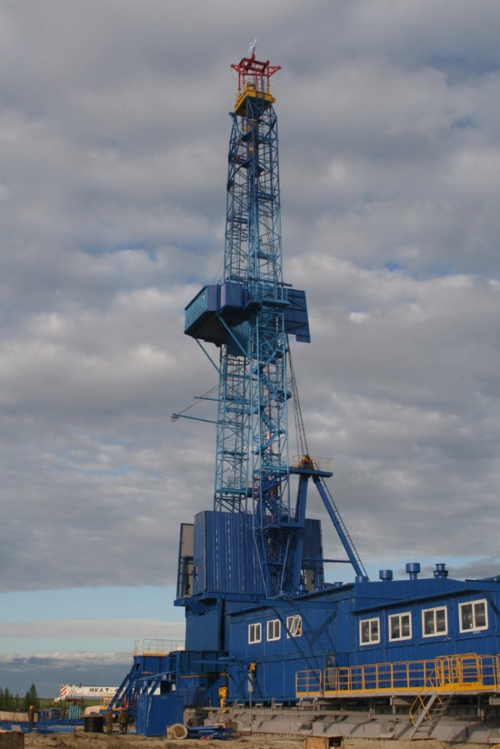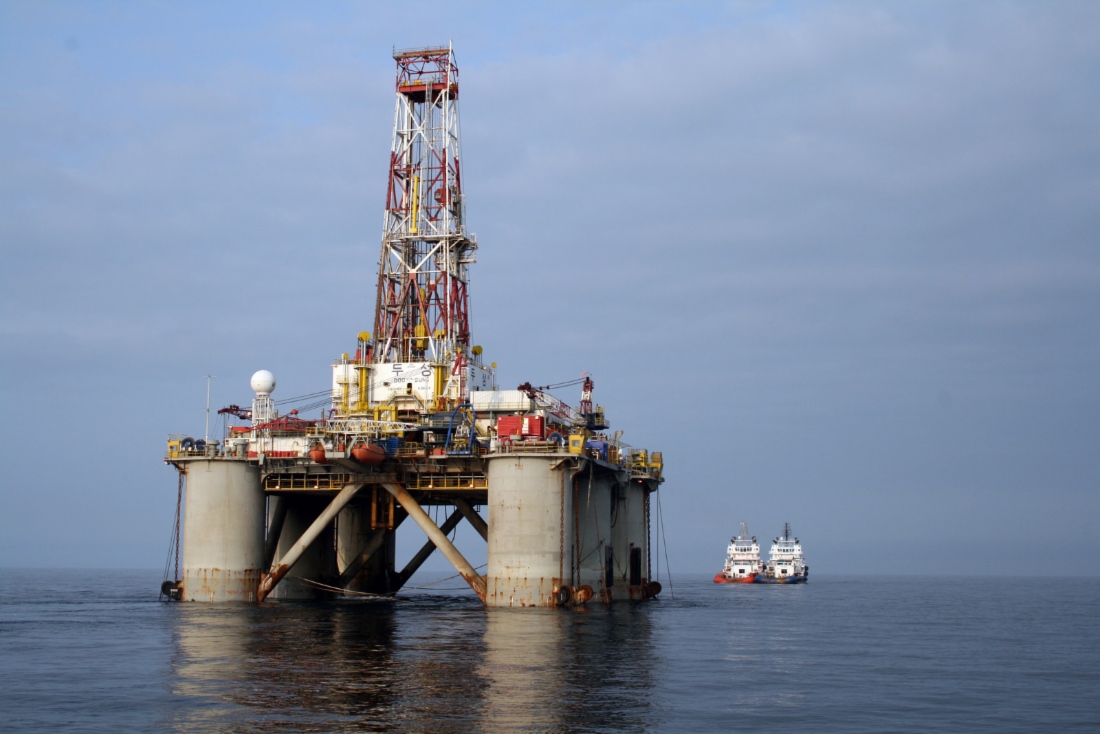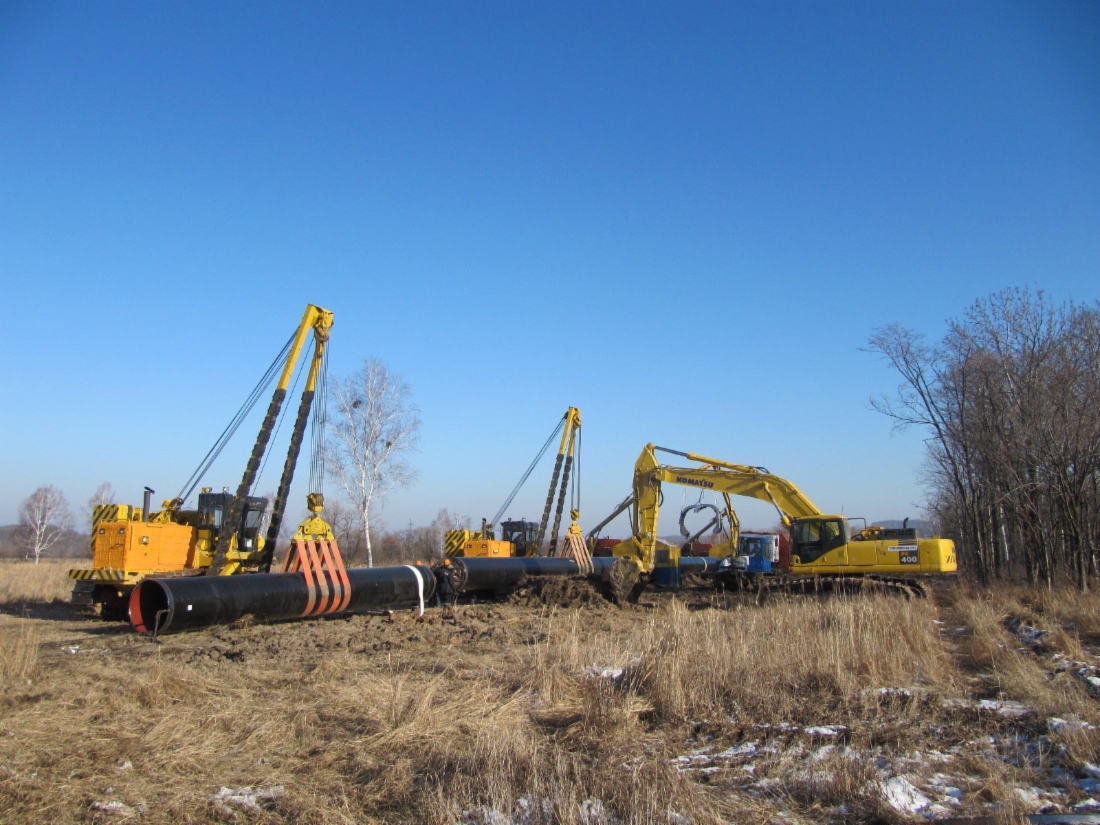Vsevolod Cherepanov: North, South and East
March 2, 2011, the interview was taken by Sergey Pravosudov
Published in corporate Gazprom Magazine Issue 1–2.
Vsevolod Cherepanov, Head of Gazprom’s Gas, Gas Condensate and Oil Production Department answers the questions of the corporate Gazprom Magazine. .
- Mr. Cherepanov, what is the amount of gas and liquid hydrocarbons produced by Gazprom in 2010 (preliminary results)?
-
According to the results of the past year, Gazprom produced 508.6 billion cubic meters of gas, 11.1 million tons of gas condensate and 32 million tons of oil.
- What are the plans for 2011?
-
In late November 2010 Alexey Miller, Chairman of the Gazprom Management Committee approved the production plan for the current year: 505.6 billion cubic meters of gas, 12.3 million tons of gas condensate and 31.7 million tons of oil.
- What is the amount of liquid hydrocarbons planned for production in 2020 and the share of the Achimov deposits in it?
-
Gazprom is currently elaborating a new gas production forecast until 2030. It is clear that production performance in this period will depend on the consumer demand for gas. Preliminary estimates indicate that in 2020 Gazprom will produce 640–660 billion cubic meters of gas including 613–630 billion cubic meters within the Unified Gas Supply System area. We are planning to produce 10.6 million tons of condensate from the Achimov deposits in 2020.
Yamal
- Could you tell us about the Yamal Peninsula fields development. When is it planned to start production from the Bovanenkovo field and when is it to reach the design capacity? When are you planning to put the Kharasaveyskoye field onstream?
-
Commissioning of the first startup complexes for the Cenomanian-Aptian deposits development in the Bovanenkovo oil, gas and condensate field (minimum capacity – 15 billion cubic meters a year) and the Bovanenkovo – Ukhta gas trunkline system is scheduled for the third quarter of 2012.
The Synchronization Schedule for stagewise commissioning of gas production and transportation facilities with due regard of the annual gas production from the Bovanenkovo field starting from the third quarter of 2012 was adopted in June 2009 in order to ensure development of the Bovanenkovo oil, gas and condensate field that will comprise three comprehensive gas treatment units (CGTU). The first well cluster connected to the CGTU-2 northern module is to be put into operation in 2012. Timely commissioning stipulates continuous buildup in gas production to reach 115 billion cubic meters a year in 2016.
The first phase of the airport construction is to be finished before the year end to improve the transportation infrastructure in the Bovanenkovo oil, gas and condensate field. Capital construction is performed by Gazprom dobycha Nadym acting as a contractor under the agreement on Gazprom’s investment projects.
The Kharasaveyskoye oil, gas and condensate field is to be commissioned no later than 2019. Vital infrastructure facilities have been built here by now, particularly a boiler house, water and sewage treatment facilities, storage facilities, a power plant, a solid waste landfill, offsite automation networks and access roads.
Continental shelf
- When is it planned to start development of the Ob and Taz Bays?
-
We are planning to initiate development of the Ob and Taz Bays after 2017. Proven gas reserves exceeding 1.4 trillion cubic meters were discovered here. The priority in development is given to the Severo-Kamennomysskoye field. It is planned to produce over 50 billion cubic meters of gas a year in the Ob and Taz Bays fields, thus offsetting a production decline in the Nadym-Pur-Taz fields being developed.
Front-end engineering design development is currently underway in the paramount fields of the Nadym-Pur-Taz region.
- Let’s take a look at the eastern part of the country. Tell us a few words about the activities planned offshore the Sakhalin Island?
-
Paramount development targets offshore Sakhalin are the Kirinskoye gas and condensate field and the Kirinsky licensed block comprising a new field discovered in 2010, namely the Yuzhno-Kirinskoye field containing 200 billion cubic meters of gas and 30 million tons of condensate.
Gazprom is tasked to synchronize the commissioning terms of the Kirinskoye gas and condensate field and the Sakhalin – Khabarovsk – Vladivostok gas trunkline. Gazprom dobycha shelf acts as a contractor implementing the investment project for the Kirinskoye field development at the same time operating gas and gas condensate production and treatment facilities within this project.
The Kirinskoye field is to be put onstream in 2012 with its maximum production level reaching 4.2 billion cubic meters of gas a year. Six production wells will be drilled (with underwater wellheads) to this end. The project passed the public hearings arranged in October 2010. The field pre-development project has been elaborated with the equipment purchase orders placed at Russian and foreign companies.
Prospecting and production wells are drilled for Gazprom by the Company’s subsidiary Gazflot which is currently finishing construction of its Severnoye Siyaniye and Polyarnaya Zvezda semi-submersible floating drilling rigs.
We will also carry out activities at other licensed blocks of the Sakhalin III project with ongoing geological exploration in the Yuzhno-Kirinskoye field and planned 2D and 3D seismic survey as well as wells drilling within the Mynginskaya prospect and the Ayashsky block.
Eastern Siberia
- When will the Chayandinskoye field be commissioned?
-
Engineering-geological and geodetic studies have been finalized and the prospecting wells are being drilled in parallel with seismic survey with subsequent processing and interpretation of the obtained data.
In September 2010 the Central Commission for Hydrocarbon Fields Development under the Federal Subsurface Use Agency adopted the Chayandinskoye field Development Plan. The field will follow the optimal development scenario envisaging production of 25 billion cubic meters of gas per year.
Development of the Chayandinskoye field oil rim is scheduled for 2014, gas deposits – for 2016 simultaneously with the paramount gas processing and gas chemistry facilities commissioning. Their construction is a crucial element for the efficient development of the Chayandinskoye field with its multi-component gas. The Chayandinskoye field is to reach its design capacity by 2021.
- Tell us about gas production plans in the Irkutsk Oblast.
-
In case Gazprom agrees to buy ITERA’s Bratskecogaz, the Bratskoye oil, gas and condensate field will produce 392 million cubic meters in 2012, 398 million cubic meters in 2013, 418 million cubic meters in 2014 and 431 million cubic meters in 2015.
South
- Gazprom is focused on large fields development and what are the plans for moderate-size deposits?
-
At the moment, Gazprom is actively developing small fields in the Southern Federal Okrug (Krasnodar and Stavropol Krais, Rostov Oblast, Republics of Kalmykia and Adygeya). The Company performs production in 57 fields including 31 gas fields, 22 gas and condensate fields and four oil, gas and condensate fields. Over a half of them, 37 fields to be more specific, are at the final development stage. Feasibility of their further operation will be determined in terms of cost effectiveness (individually for each field).
- Concerning southern Russia, it is necessary to understand whether Gazprom will build up gas production in the Astrakhan Oblast.
-
So far, Gazprom has no plans to build up annual gas production over 12 billion cubic meters in the Astrakhan field since gas treatment and processing facilities are fully loaded now. Moreover, gas production in the Astrakhan Oblast is limited by a high content of sulfur in the produced mixture increasing pollutant emissions but at the same time the operating plant has to meet the environmental restrictions.
Meanwhile, I should notice that the Astrakhan dome is a paramount hydrocarbons production project in the European part of Russia. B+C1+C2 gas reserves exceed 5 trillion cubic meters while the resource potential is over 7 trillion cubic meters. Upon solving the acid gas utilization and deep processing problem (expected beyond 2020) the Company will be able to build gas production up to 70 billion cubic meters a year.
Alternative
- Non-conventional or the so-called shale gas revolution issue has recently been put on top of the agenda… What’s your opinion?
-
Basically, non-conventional gas resources have an immense potential. These are not only shale gas but coal bed methane (CBM) and gas hydrates as well. Despite the fact that their competitive advantages are way below those of conventional gas, one should realize that non-conventionals have a great impact on the global energy mix. Investigation of non-conventional gas resources allows for assessing and timely responding to changes in the global balance between gas export and import.
In February 2010 Gazprom started Russia’s first CBM production project in the Taldinskoye field. In 2011 the Company is planning to initiate development and pilot operation of 10 prospecting wells in another area (Naryksko-Ostashkinskaya). Further on, it is planned to move over from pilot to commercial operation of the Taldinskoye field using produced methane as a motor fuel and for power generation.
I would like to stress that successful implementation of this project is impossible without state support: it is necessary to categorize CBM as a new kind of natural resource with zero severance tax.
Concerning gas hydrates, I should notice that they have the greatest potential compared to other non-conventionals as they are plenty and widely spread. Gazprom VNIIGAZ undertakes research efforts aimed at developing additional non-conventional gas resources within the activity areas of Gazprom’s production companies. The research results allow making a preliminary conclusion about possibility to develop additional resources of Western Siberia concentrated on top of the Cenomanian deposits. The most promising areas are selected for targeted geological exploration of natural gas hydrates in the operating fields of the Nadym-Pur-Taz region along with the recommended well drilling locations.
Shale gas has become widely known as an energy resource showing a steady production growth across the globe. But shale gas projects bear substantial environmental risks. Moreover, shale gas production is specific with relatively low flow rates and with their further drop in the first years of production, a significant volume of drilling operations and the need to frequently move to new areas to be developed. These factors make shale gas a local energy resource offsetting a decline in conventional gas production or its unavailability in the local markets.














